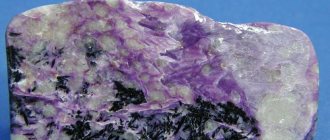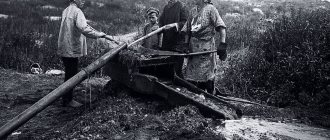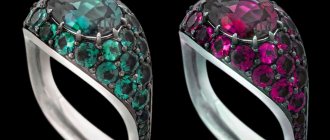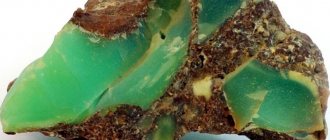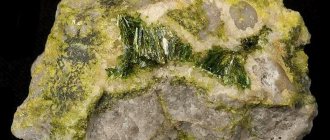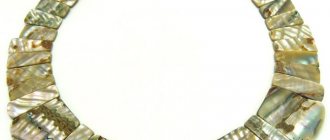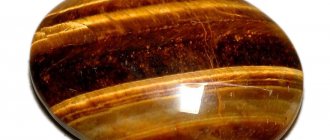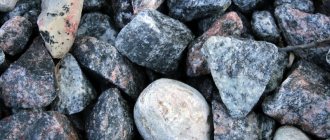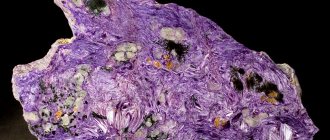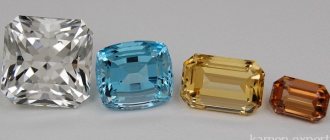The Rosetta Stone is a slab of basalt and is the oldest and most valuable artifact that was discovered by specialists completely by accident. The weight of the stone block is approximately a ton. Three extraordinary inscriptions were also discovered on the Rosetta Stone, which were written in two ancient languages. One of the records was in ancient Greek, and it was this that scientists and historians, with the help of cryptologists, were able to decipher first, without putting in much effort. Two other inscriptions were a kind of mystery for them. These texts were written in ancient Egyptian and were not easy to decipher.
The first inscription was nothing more than the most ancient hieroglyphs, which were used by priests from Egypt many years ago. The second inscription was written in demotic script, which was quite common in Egypt during the heyday of the empire.
History of the discovery of the Rosetta Stone
The discovery and detailed study of ancient artifacts helps scientists trace the development of humanity from our most ancient ancestors, who left a rich cultural heritage.
The exact date of discovery of the Rosetta Stele is July 15, 1799, in connection with which historians mention the following events from the time of Napoleon:
To develop the conquered territories in 1798, Bonaparte equipped a ship to be sent to Africa, on which, in addition to soldiers with horses, there was a group of scientists.
They were all members of the scientific corps known as the Commission on Science and the Arts. Napoleon's plans included not only establishing power in Egypt, but also exploring a country unknown at that time and searching for its legendary treasures.
The result of several years of work by famous geographers, botanists, linguists and geologists was an extensive package of information about distant Egypt, the formation of a huge collection of antiquities.
Based on the extracted material, they decided to create an Institute in Cairo to collect Egyptian artifacts for their large-scale study and save them from destruction.
Who found the basalt block?
The Rosetta Stone was found in 1799 near the city of Rosetta, located in the delta of the western branch of the Nile River (45 km from Alexandria). An ancient block with inscriptions was discovered by sappers while digging trenches surrounding Fort Saint-Germain.
At that time, most of Egypt was under the control of French troops, and to fully control the territory, Napoleon needed a victory over British troops.
The captain of the French troops, Pierre-France de Bouchard, was lucky enough to remain in history as the discoverer of the black block. The officer immediately recognized the importance of the stone he found. The find was sent to Cairo to study the texts found on it in unknown languages.
After the surrender of Bonaparte's troops, the slab was handed over to the British (1801), and only casts from it remained in Paris. Beginning in 1802, the study of the Rosetta artifact was continued by scientists at the British Museum, where a fragment of the stone obelisk is kept today.
What is written on the ancient tablet?
As research progressed, it was established that the reason for creating the original monument was an order from the priests of Memphis (an ancient Egyptian city) in honor of the 9th anniversary of the reign of the new ruler.
He was Pharaoh Ptolemy V (Epiphanes). It is assumed that the stone block was hewn out in the city of Sais (modern Sa el-Hagar), and then transported to Rosetta.
The laudatory text of the Memphis Decree, represented as a hymn of thanksgiving to the reigning pharaoh, was carved on the Black Stone from Rosetta in three ancient languages.
This trilinguistic practice of writing texts was adopted during the reign of the Ptolemaic dynasty. The Council of Priests expressed gratitude to the young ruler for his generous gifts to temples and priests on the occasion of his accession to the throne.
The inscriptions also contain excerpts from the king’s addresses to the people who suffered from robberies and were burdened with the problems of internecine wars that were destroying the irrigation system and agriculture.
For the prosperity of Egypt, the pharaoh needed the support of the priesthood, since religion became a tool for maintaining power.
How he was discovered and what happened next
The history of the Rosetta Stone is connected with Napoleon’s foreign campaigns:
- It was found by French army captain Pierre Bouchard on July 15, 1799 near the town of Rosetta.
- Bouchard sent the artifact to the Cairo Institute of Egypt.
- Two years later, the French were defeated by the British, and the stone went to the winners among other trophies.
- The classification was also not decided immediately. The accompanying list mentions black granite; after almost half a century it is already black basalt. Only a century and a half later, in 1999, the stone was cleared. And they found that it was a shiny dark gray agglomerate with pink veins.
The Rosetta Stone material was classified as granodiorite, a rock of igneous origin whose composition ranges from granite to diorite.
In London they worked with the Rosetta stove. The inscriptions were painted over with white chalk for greater clarity, and the rest was covered with a protective layer of wax.
Overview of the characteristics of the Egyptian find
Externally, the Rosetta Stone is a slab of granodiorite, the material is a rock made from a mixture of granite and diorite.
To protect the antiquity from being probed by curious visitors, it was opened with a layer of wax, after which the surface of the block turned black. This fact became the reason for acquiring a new name - the relic began to be called the Black Stone.
Characteristics of the Egyptian artifact:
- the height of the stone stele is 114.4 cm with a width of 72.3 cm and a thickness of 27.9 cm;
- the approximate weight of the French military find ranges from 760 kg;
- the density of the intrusive rock is 2.7-2.9 g/cm3.
According to Wikipedia, the granodiorite from which the Rosetta Stone fragment is carved is a felsic igneous rock.
Among the mineral elements in the composition of the stone there is a certain percentage of quartz, plagioclase, alkali feldspars, biotite, hornblendite, pyroxenes, hornblende and other components.
The chemical composition of natural stone contains a large range of important minerals - iron oxide, silicon dioxide and titanium dioxide, as well as oxides of aluminum, magnesium, sodium, calcium and potassium.
LiveInternetLiveInternet
Quote from Koparev's message
Read in full In your quotation book or community!
The book “Deciphering Forgotten Scripts” Deciphering Ancient Egyptian Hieroglyphic Writing When deciphering the writings of Ancient Egypt, an important role was played by the inscriptions carved on the Rosetta Stone. This stone was found on June 15, 1799 by an officer of the French troops P. Bouchard during the construction of a fort near the Arab town of Rosetta, located in the western part of the Nile Delta. The stone was sent to the Egyptian Institute in Cairo. Since the French fleet was completely destroyed by the English fleet under the command of Admiral Nelson, as a result of which the connection between Napoleon’s troops and France was interrupted, the French command decided to leave Egypt, handing over the discovered ancient Egyptian monuments, including the Rosetta Stone, to the British. The Rosetta Stone is 114.4 cm high and 72.3 cm wide. It is a fragment of a high stele. Three inscriptions are engraved on the front surface of the stone: in the upper part there is a hieroglyphic text, in the middle there is a demotic text, and at the bottom there is a text in ancient Greek. Basically, 32 lines of demotic text have been preserved. Only the last fourteen lines of the hieroglyphic text have been preserved, but they have also been broken off, all fourteen on the right side, twelve on the left. The hieroglyphic inscriptions on the stone go from right to left, as the heads of people and animals face to the right. Thus, the endings of two lines (thirteenth and fourteenth) have remained unchanged to this day, which made it possible to decipher the hieroglyphic writing of Egypt. It can be assumed that the hieroglyphic and demotic texts are written in the same language. It is also assumed that the hieroglyphic text also had 32 lines, like the demotic one, which gives researchers the opportunity to find in the hieroglyphic text groups of graphemes located in the lines of text at almost the same distances as there are between groups of syllabic graphemes in the lines of the demotic text. A comparison of these groups of hieroglyphs with lexemes of the demotic text would make it possible to determine the phonetic meanings of the hieroglyphs, as well as to clarify the phonetic meanings of the graphemes of demotic writing. It is still believed that most of the hieroglyphs are ideograms, that is, most researchers of the culture of Ancient Egypt are of the opinion that a significant part of the hieroglyphs are not phonetic. Decipherment of Demotic writing by T. Boshevski and A. Tentov In 2005, Macedonian scientists T. Boshevski and A. Tentov presented to the international scientific community a work that was the result of research carried out within the framework of the project “Deciphering the Middle Text of the Rosetta Stone,” which was carried out with the support of Macedonian Academy of Sciences and Arts. In 2003, when starting their research, Macedonian scientists were confident that the language of the middle text of the Rosetta Stone, which they were going to study, must definitely have the characteristics of a Slavic language. Macedonian scientists decided that since Ancient Egypt was ruled for a long time by the ancient Slavic dynasty of the Ptolemies, whose homeland was ancient Macedonia, then the decipherment of demotic writing must be carried out on the basis of Slavic languages (https://rosetta-stone.etf.ukim.edu.mk)
. Their hypothesis was confirmed by the research results arrived at by Macedonian scientists. The results of their research were the identification and sound identification of syllabic graphemes in the middle text of the Rosetta Stone, representing 27 consonants and 5 vowels (see Fig. 1). The language of the middle text of the Rosetta Stone is Slavic.
Rice. 1. Table of syllabic graphemes identified by Boshevsky and Tentov. Syllabic signs were written one above the other. When reading the middle text, you must first read the upper grapheme, and then the lower one. However, Macedonian scholars did the opposite, which led to a misunderstanding of the meaning of the middle text of the Rosetta Stone. In one of the lines of the demotic text one can read: “And what is my God like? - Come to life! Reveal What He Is.” The Macedonian researchers themselves identified the language of the middle text of the Rosetta Stone as a Proto-Slavic language. They also came to the conclusion that there is no need to look for the complete identity of the three texts, since it is impossible to find it. Deciphering the hieroglyphic script of Ancient Egypt Modern science supports the theory that two scripts - hieroglyphic and demotic - were used to write the state act on the Rosetta Stone in one language - ancient Egyptian [1]. Thus, the same language was used to write the middle text and the text at the top of the Rosetta Stone. Macedonian scientists T. Boshevsky and A. Tentov proved that when writing the middle text of the Rosetta Stone, one of the ancient Slavic languages was used. Consequently, when deciphering hieroglyphic text, one of the Slavic languages should also be used.
Apparently, the hieroglyphic text of the Rosetta Stone also had 32 lines, like the demotic one, which makes it possible to find in the hieroglyphic text groups of hieroglyphs located in the lines of the hieroglyphic text at the same distances from one group to another as the distances between groups of graphemes whose phonetic values are beyond doubt in a demotic text. A comparison of these groups of hieroglyphs with the lexemes of the demotic inscription would make it possible to determine the phonetic meanings of the hieroglyphs. The decipherment began by comparing the end of line 32 of the middle text (see Fig. 2) with the end of line 14 of the hieroglyphic text (see Fig. 3). The result of the transliteration of the end of line 32 of the middle text, carried out by T. Boshevsky and A. Tentov, is presented in Fig. 4. The phonetic meanings of many graphemes are not determined entirely accurately. The syllable “NA” was used completely inappropriately.
After comparing these two sections of inscriptions, it became possible to establish the phonetic meanings of several hieroglyphs. It has been established that the lexeme “NATSZHOY” in a segment of text on a demotic (see Fig. 5) cannot be found in correspondence in a segment of hieroglyphic text. Continuing to compare sections of the two texts, I determined the phonetic meanings of several dozen hieroglyphs. Subsequently, a syllabary of ancient Egyptian writing was created: Syllabary of Ancient Egyptian Writing
Rice. 2. Drawing the end of line 32 of the middle text
Rice. 3. Drawing the end of the 14th line of hieroglyphic text
Rice. 4. Transliteration of the end of 32 lines of demotic text.
Rice. 5. Lexeme NATZHOY. Translated into Russian: OUR.
It has been established that the sign ||| denotes plural. Before it, the member of the sentence has the ending -and or -s. In rare cases, this sign is placed at the beginning of a word. It has also been established that if there is a sign next to the hieroglyph | , then the vowel sound of the hieroglyph is unstressed. Sign | next to a hieroglyph denoting only one vowel sound, indicates stress on this vowel. If after a hieroglyph denoting a consonant with a vowel sound there is a hieroglyph denoting a vowel sound, then the vowel sound of the first hieroglyph is not pronounced. The hieroglyphic inscription of the Rosetta Stone is read from right to left. 1st line: ...(Str)iltsy in the wound we ttsem and value, and we have two legs tsati... 2nd line: ...The most tsanya in Adtsu da Dtsin have passed. Don't (t)dtsani Dtstyaba! Ttsemy sadtse ts gods... Nitsyae early we are early, hell is price... and we... Line 3: ... (With rays) lives mi Sanats Badzzh dtsvuimy and mynnya. Drinking, sweating, and nothing. Tsimmi dtsanimya themselves are tsandtsaim - dtspottsaim! Edzzha nadzzzhamyya warriors... 4th line: ...Tschi tsishchie dtsit dsig (no ||| - Author), and we will bring down, so that somavits, ganadz... We are not tselymys Tseba: we are pits of dowry. Zhwe Tseng Yeyi. Yo Nimya tsganadz dtsynytshi dzmyya, so that Tsem abye... Line 5: ...(Save) we ye velytstse dtsanimya, retshi Yo runema. Zsaruniedz lies to the people. Dtsdzhim dtsyo may dtsya zhavadtsa. Nevermind! Ttsam nitzvom sweaty, and tse drinking yo! Bloody... Line 6: ...No be tsyayay ttmyyama baeamymy. Tse zzh ani ni e Yoa. Tabe of the Tsar (Nadrtsiy E Dztsanatsey), badem of the face of life! (Nadrtsiy E) Yayyo Yaghnya Nazzha (Nadrtsiy E)… Line 7: ... New gods - three tsatin. Otsei nasa – Tswa. Dtsim bo Dtsvu, dzaniim, appreciate, vaviim, nadymaeamy, be Bozzhimimy voi vuby. Netsim dtsi, by imm. Yonni tsikav, bai them tsvya tsuzzhae: “We are the sanams of the Tsar (Nadrtsiy E)…”. Line 8: Detstsescha dsesya for us tsudtsa. Bogm navya do not tsti, because do not tstsiti oyu. Dzi dtsiya sabota. Eating tsuxua battlefathers? - Bo nasai vain! “Tsezzhai yone for you... Badtsem, hundred dtsim, dtsanim,” they say to you... Line 9: ... He thinks: you are a lover, rutsems, - he thinks. Ie batsu: don’t fuck with me... And here we are, so that sya shemya e mae dtsezzhdtsa nitsnommy nagama avi vobba, notsni darkness... Line 10: ... “Not a groan, not a breath. Nazj kirey (from here – CAIRO – Author) runs away. Dtse we avtzymy tza dzim, - bayaime. – Dzttsamyaya, stsucho, prostrate. Razhdennova reva dtsebe tsshaim, - Bodzyavu, we Yaiyo zzhivao. Don’t be a fool, muzainivaya.” And ye Dtsyya Ruts Samm... Line 11: “...Ye Niva.” Wuzzhe bayim inoim bodzyim. Tsetsraim, tstyvoi bo batie-dzhimy tsuzzhatsi, - no sari e va Dtsyne, in Attse. No tsvusamaeamma wutsty tsey. Ino Nitsrayim, you are the best! And on neeeim vu Raimvo(ve)… Line 12:… Narcius E Dzttsanatsey) badem ni tsatshani. Vostshiyim, adtsbayim dza sha, we appreciate these zhivimmie tshi dtsynets. Neither tsamma is alive. Myva vi yaiy botsdtsy. Bogmi the new face of muzhaimys. Badcem. Tsbadzizzh we are. And we, and the warriors... Line 13: ... We are bad at the sazzo. We give it to you. Tsitsy stinks, live tsymmy. Iymu mavim dati, wife. Va ata oba badem dtsanitsy we Tsibe. Imy tsuzzhim vumen, for Nitsrayim nitsa dsani muzzhi muzzha tsymmyya. Tse zhi nyo buggy... Line 14: ...Live, Zhzheno, nniy... Mavisa is the king: the king is without him. Ttsebe, Revive, tsanyinni ejavoy. Bo tsedtsi bagmi new – tsadzi dtseyoa! Tabe, the King (Narciy E Dztsanatsey), badem. Translation
We honor and appreciate the wounds of the shooters, they need to get back on their feet... 2. The very veneration of the Father and the Son has passed. There is no praise for You. We honor the sun with the gods. We bow down and we are wounded early, and in the afternoon... 3. And the Sun of God lives on me with His rays. With His grace He satisfies the hungry. We ourselves are imbued with these praises, saving our souls. If our warriors... 4. 3000 honors these, and we will thrust in in order to wash away, drive away. We pierce, not aiming at You: we pierce for the sake of particles. Her Son lives! His Name will drive away the offspring of Satan, so that with Him... 5. Let us preserve the veneration of Her, we will preserve Her sayings in the scriptures. The Antichrist lies himself. This creature considers it alien. Destroy her! He himself gives this poison to those who are not his own to drink, and so we drink it! 6. They are not the snakes that were spoken of. After all, they don't belong to her. Yours, King, Who called Her the Sun, we see living faces! Yours, Who called Her Lamb. 7. There are three hundred new gods. Ours is Two. We honor the Two, we honor, we value, we reverence, we exalt, being God’s fishers. Tell everyone, tell everyone. Get people interested, talk about yours to someone else’s: “We are the sons of the King, Who Called Her the Sun”... 8. This brainchild is alien to us. Do not honor the new gods, because they are vile. Remember the covenants. Can we really be afraid of this, since we honor our own? “They are strangers to you. We see that we honor and venerate,” they will tell you... 9. He thinks: “Love me, rutens.” But I see: neither one’s own speech flows - another revered one... And we honor that one, and with this we show devotion. So that this family of hers would be tormented by spirits of evil - both. Night darkness... 10. “She doesn’t moan, she breathes. Our ruler is running behind. “So we are the sheep behind him,” we say. - And they themselves, jokingly, prostrate themselves. We are trying to stop the baby from crying. A baby who escaped torture and death itself.” Rus was... 11. ...Her Niva. We already speak to other gods. Upper Rome, your gods are alien spirits, not kings in the Father and the Son. No one hears the words of their lips. O Lower Rome, you are the horror itself! And in it, in Rome... 12. ...He who called Her the Sun, we see countless. Let us honor, thank, and appreciate the resurrected thousands of sons for this. They did not resurrect themselves. We are only gods in it. Other faces strengthen our faith. We see it and we will see it again. Both we and the warriors... 13. “...We look at the sun. Let's give it to them. They are revered as saints during their lifetime. I will tell him to give it to his wife too. We see the veneration of these two. But they have acquired someone else’s mind, and the men of Lower Rome worship only a revered husband. After all, they are not gods”... 14. Alive, Zheno... The kings have already said: this king is outside of her. She glorifies You, the Risen One. After all, these new gods are alien to her. We see You, the King, Who called Her the Sun. In Fig. 6 we read the inscription: “Tsen, tsiliva bolivaim. (New column) Tstse nami vani. Litsa im vytsetshi abedtsil." Translation: “Son who heals the sick. They are with us. They promised to carve their images.”
Rice. 6. The inscription “Tsen, tsiliva bolivaim.” Tstse nami vani. Litsa im vytsetshi abedtsil."
So, everything suggests that the hieroglyphic writing of Egypt is Slavic syllabic writing. A. T. Fomenko and G. V. Nosovsky several years ago formulated a hypothesis according to which the archaeological and written history of “Ancient” Egypt represents only the medieval history of the African inheritance of the Great Horde Empire, which arose as a result of the colonization of the territories of Eurasia and Africa by the Slavs and Turks . In parallel with colonization, the mission of the Church was carried out, because “Ancient” Egypt was a Christian country. In Fig. 7[2] you see a linen shirt with a Christian cross embroidered on it, in which one of the pharaohs was buried. The pharaoh also wore gloves. Gloves, as we know, are a piece of clothing that was worn only in the Middle Ages.
Rice. 7. The shirt in which one of the “Egyptians” was buried, along with a glove. T-shaped Christian crosses were often depicted on the bas-reliefs of Egyptian temples (see Fig. 8). A T-shaped cross is also depicted on the shroud of Queen Elena Voloshanka[3]
Rice. 8. T-shaped cross on a bas-relief in Luxor.
Thus, we can conclude that A.T. Fomenko and G.V. Nosovsky were right. It is still believed that most of the hieroglyphs are ideograms, i.e. most researchers of the culture of “Ancient” Egypt are of the opinion that a significant part of the hieroglyphs are not phonetic, however, the results of decoding the hieroglyphic writing of Egypt indicate that hieroglyphic writing is Slavic syllabic writing. It is impossible to see ideograms in hieroglyphs, since in each ideogram, if desired, one can see many semantic meanings. For example, the distinguished Egyptologist Shabas translates one of the hieroglyphs as “hyena.” And the no less honored researcher of Egypt, Brugsch, believes that this hieroglyph has the semantic meaning “lion”[4]. Similar scientific research has been going on for two centuries... [1] See: Quirke S. and Andrews C. Rosetta Stone: Facsimile Drawing with an Introduction and Translations. – New York, Harry N. Abrams, Inc., Publishers, 1989. [2] Desroches-Noblecourt Christiane. Life and Death of a Pharaoh Tutankhamen. – London, Penguin Books, 1963. – P. 270. [3] Medieval face stitching. Byzantium, Balkans, Rus'. Exhibition catalogue. XVIII International Congress of Byzantinists. Moscow, August 8-15, 1991 - Moscow. Ministry of Culture of the USSR. State museums of the Moscow Kremlin. 1991. – P. 60. [4] See: Nosovsky G.V. Rus' and Rome. Slavic-Turkic conquest of the world. Egypt / G. V. Nosovsky, A. T. Fomenko. 3rd ed., rev. And additional – M.: Astrel, AST; Polygraphizdat, 2010. – P. 317.
You can download E. A. Koparev’s book on the decipherment of Proto-Indian and Ancient Egyptian writings on my PDF page.
Secrets of the original stela
Researchers have established that the Rosetta artifact is part of a monolithic slab with an approximate height of 149 cm.
However, during subsequent excavations, no more fragments were discovered that could claim to be additional.
Hollowed inscriptions of three varieties clearly appear on the polished front surface:
- The upper part is filled with ancient Egyptian hieroglyphic writing, only 14 lines (the last) survive;
- The center is indicated by demotic text - a variant of abbreviated cursive writing dating back to the era of late Egypt, 32 lines have been preserved;
- The lower part of the black stele is covered with writings in the ancient Greek dialect; 27 lines have survived.
The reverse side of the Rosetta Relic is roughly processed, while the front surface is highly polished.
The historical importance of the discovery of the past for modern science in the texts imprinted on it, which made it possible to decipher Egyptian writing.
Meaning of the Rosetta Stone
At the time of the discovery of the Egyptian artifact, scientists around the world had insufficient knowledge about the daily and cultural life of Egypt. Interest in the country, its myths and legends did not fade, which is why famous researchers from various fields of science were included in Napoleon’s expedition.
In addition to the Rosetta Plate, the collection of finds included many amazing exhibits, but the most important was the Black Stone. What is written on it united knowledge about several eras, and texts in different languages were presented as a single chronicle of that time.
The enormous significance of the Egyptian relic for science is the discovery of a trilingual decree confirming the fusion of two cultures during the Hellenistic period - Egyptian and Greek.
As a result, official documents were drawn up in Greek, Egyptian hieroglyphs were used by priests, and the demotic style was used in everyday life.
The stone opened the door to understanding Ancient Egypt
When the stele was discovered, the first two texts were unreadable, but the Greek language was known to scientists. Because the same decree was written in three languages, the Rosetta Stone provided an opportunity to uncover the mysterious Egyptian culture by deciphering the hieroglyphic inscriptions found on the walls of tombs, obelisks, pyramids and other ancient Egyptian artifacts.
Rosetta stone hieroglyphs
Options for interpreting texts
The results of studying the unique find became the key to revealing the secrets of the construction of the pyramids and the reasons for making mummies, and introduced the scientific world to the gods worshiped by the inhabitants of Ancient Egypt.
The main victory in deciphering ancient hieroglyphic lines was won by two of the greatest scientists in Europe - the young linguist from France Jean-François Champollion and the famous British rationalist physicist and general scientist Thomas Young, who began searching for correspondence between groups of ancient hieroglyphs.
Translation of Greek text
The researchers of the Rosetta Stone were well acquainted with the ancient Greek language, but were poorly versed in the details of its use during the Hellenistic period.
During the reign of the Ptolemies, Greek was considered the state language.
Several people were involved in the translation of the ancient Greek inscription - starting with the oral interpretation (1802) of the Englishman Stephen Weston and ending with the work of the French antiquarian Hubert Pascal Ameilon, published in French and Latin.
What was written in the lower right corner in Hellenic symbols has not been completely preserved.
Therefore, the translation text is based on the meaning of the other two pieces of information on the Rosetta Stone. The merit of Cambridge historian Richard Porson in his attempt to reconstruct the lost text, his version of the proposed reconstruction (1803), was recognized at the council of the Society of Antiquaries.
The Russian translation was published by Aron Gurevich in the Reader on the History of the Ancient World.
Decoding demotic writing
The researchers figured out the secrets of the demotic version of the inscription quite quickly, since the text was practically undamaged.
Two scientists worked on the translation:
- The Swedish diplomat David Åkerblad at that time had in his work little-known letters from Egypt, today recognized as demotic;
- The French orientalist Sylvester de Sacy was lucky enough to obtain the first version of a lithographic print from the Rosetta Stone.
Both scholars focused on the middle part of the text, recognizing it as an alphabetic writing system and focusing on verbal structures with repeated groups of characters.
As a result, Sylvester de Sacy managed to identify five names - “Alexander”, “Arsinoe”, “Alexandria”, “Ptolemy”, as well as Ptolemy’s second name - “Epiphanes”.
Åkerblad published an alphabet consisting of 29 letters; the scientist compiled a table of it using Greek names in demotic text.
The meaning of the remaining demotic symbols could not be determined then; today the presence of ideographic, phonetic and other types of symbols is known.
Interpretation of hieroglyphic text
Deciphering ancient Egyptian hieroglyphs was particularly difficult; this type of writing has been poorly studied. There has been a lot of debate about the meanings of hieroglyphs - whether they represent sounds or objects.
Moreover, it was this part of the relic that suffered the most from destruction. The championship in deciphering hieroglyphs belongs to the young French researcher of the Rosetta Stone - Francois Champollion.
Briefly about what is written in the address to the pharaoh, for which they thanked the ruler:
- “For generous gifts and donations, mercy towards the people”;
- For “fair government, economic qualities”;
- Protection from external enemies with the wish of eternal reign.”
A talented linguist suggested that only in the writing of foreign names and titles do hieroglyphs become sounds, and the hieroglyphic signs themselves are related to the Coptic language.
The result was the conclusion that Egyptian hieroglyphs were phonetic, which, according to the ancient Egyptian tradition, were read from right to left with the head turned to the beginning of the line.
When read from top to bottom, the text becomes columns separated by long ribbons of straight lines.
What is written on the plate
The text of the Rosetta Stone is an inscription of gratitude addressed to the then ruler of Egypt from the Ptolemaic dynasty, Ptolemy V Epiphanes.
It was composed by priests on the occasion of reconciliation between the Ptolemaic dynasty and the Egyptians:
- The text lists the virtues of the new young king: wisdom, generosity, justice, mercy, forbearance, diligence, the ability to protect the country from an external enemy.
- It is written on the Rosetta Stone that his reign is patronized by the gods. Contains a wish for the descendants of Ptolemy to reign forever.
- The priests undertake to “increase honors” to the king.
Among them is to install in all the temples of the country an image of the king as the intercessor father of Egypt, in front of whom rituals will be performed three times a day. There will also be erected steles with a decree in the sacred (that is, Egyptian), Hellenic and native languages. That is, copies of the Rosetta plate.
Inscriptions on the Rosetta Stone
Champollion's contribution to the decipherment
Jean Francois Champollion
In parallel with Francois Champollion, other scientists were engaged in deciphering the written heritage of the Egyptians, but the French orientalist Sylvester de Sacy and the Swedish diplomat David Åkerblad failed to achieve high results.
The contribution of the brilliant French Egyptologist Champollion to the interpretation of texts was much greater, because he deciphered and read the hieroglyphic records on the block from Rosetta, which no one before him, starting from the fourth century, could do.
Champollion learned about the inscribed Rosetta Stone while still at school. Since childhood, the future linguist had extraordinary abilities for learning languages and was interested in the secrets of the history of Ancient Egypt.
After reading about an Egyptian artifact in a magazine, nine-year-old Jean-Francois said that he would definitely decipher and read the hieroglyphs, and began studying the inscriptions at the age of 19.
Champollion compiled an extensive dictionary of ancient Egyptian symbols based on a bold hypothesis about the syllabic structure of the hieroglyphic alphabet.
The young scientist suggested that in the inscriptions, Egyptian hieroglyphs indicated not words, but syllables and consonants.
Champollion’s book “Egyptian Grammar,” published in 1836, introduced the scientific world to achievements in deciphering ancient writing.
The last time hieroglyphs were used was in 396 AD.
The widespread use of hieroglyphs quickly declined after the Roman Emperor Theodosius I closed all non-Christian temples in 391 AD. The last known inscription is dated 24 August 396 AD. The ability to decipher hieroglyphic writing has been lost for over a thousand years. The challenge of solving the Rosetta Stone was that no one knew much about hieroglyphs, such as whether they were simply symbols or letters of a spoken language; or whether they were written from right to left or left to right. Add to this that the three texts did not correspond word for word with each other and due to the damaged condition of the stele, none of the three texts were absolutely complete.
Hieroglyphs on an Egyptian burial stone
Where can you see the famous relic today?
After the British victory in 1801, the French had to transfer to the winners all the baggage of priceless treasures found in Egypt. Thus, monuments of ancient culture became the basis of the Egyptian collection stored in the British Museum.
Among the exhibits in the collection is the Rosetta Stone with writings that were successfully deciphered by Francois Champollion, having spent 10 years interpreting the hieroglyphs.
The relic, which was found by a French officer, was presented to the British Museum by King George III, considering the stone slab to be of insignificant material value.
Today the famous Black Block, which has become the most popular exhibit, is in the museum’s treasury. Road map - London, Bloomsbury, Montagu House.
Possibility of returning to Egypt
The leadership of the Egyptian Antiquities Service presented claims to the British Museum with a proposal to return the “icon of Egyptian identity” to its homeland. In addition to the Rosetta Stone, the list also included other Egyptian relics belonging to museums in different countries.
The management of the British Museum limited itself to returning a full-size copy of the Black Obelisk in 2005.
However, the Egyptian authorities did not accept the refusal and in 2013, instead of returning the artifact, they asked for at least permission to hold a temporary exhibition in connection with the opening of the largest archaeological museum in Giza.
The request was rejected due to an unspoken ban on the repatriation of cultural heritage monuments.
Treasure location
It should be noted that the text itself, carved on the stone, is of great historical interest - it follows from it that a representative of the Ptolemaic dynasty was actively involved in temple construction. It is necessary to clarify that all treasures brought from Egypt became the property of the English crown, and the kings, by their will, donated them to museums. In 1802, George III donated the Rosetta Stone to the British Museum. Where is this treasury? In London, at Montague House in Bloomsbury. According to staff, the Rosetta Stone is the most visited of the museum's single exhibits.
Interesting Facts
The name of the area where the artifact was discovered changed depending on the people living in it. The ancient Egyptians named the village Rakhit and subsequently transformed it into Rashid. Thanks to the influence of the French, the settlement began to be called Rosetta, now it is the city of Ar-Rashid.
In addition to the ancient inscriptions, which were not completely preserved, the left and right sides of the monument were equipped with newer text ribbons, painted white.
They read: “Captured from Egypt by the British Army in 1801” and “Given by King George III.”
The benefit of the Rosetta Stone for humanity is the decipherment of hieroglyphs, which revealed the linguistic and textual style of a unique civilization, which left written evidence of historical, literary and administrative records.
The inscriptions, which are more than 3 thousand years old, have become a symbol of the study of other worlds. This is evidenced by the name of the Rosetta space probe, launched in 2004 by the European Space Agency.
Named by a similar name:
- Rosetta Stone software block , designed for learning foreign languages using a computer;
- International project "Rosetta" , uniting linguists involved in digitizing data on the languages in which humanity communicates;
- British rock band Rosetta Stone , who performed for 10 years in the gothic rock style, founded in 1988;
- The track Rosetta Stone by the American band Tool , as well as the video game The Rosetta Stone , made in a multi-platform type.
In addition, in the BBC series you can find a documentary-fiction film of 6 episodes about ancient Egypt. The authors of the series will introduce the history of the discovery of the Rosetta Stone.
Viewers will learn about three outstanding Egyptologists who rediscovered for humanity the secrets of the ancient civilization of Egypt, which were considered lost forever.
The Rosetta Stone texts have become the key to interpreting ancient Egyptian writing and unlocking the unsolved mysteries of humanity's past.
The day September 27, 1822, when Jean-François Champollion introduced the results of his research into ancient hieroglyphic lines to the audience of the French Academy of Sciences, became the birthday of the science of Egyptology.
The talented linguist himself was awarded the title of great Egyptologist who revealed the secrets of the past.
Science Egyptology
In 1822, he described all his discoveries in a letter addressed to the secretary of the French Academy, Bon-Joseph Dozier. The letter provided a list of hieroglyphs and their Greek translation. Two years later, Champollion published a book dedicated to King Louis XVIII, containing a more accurate translation and almost perfectly reflecting the grammar of the ancient Egyptian language. This work is also considered the beginning of the relatively young science of Egyptology.
— Advertising —
Jean-Francois's discoveries were highly appreciated by people, and even Young himself was surprised, but, nevertheless, believed that he, too, had the merit of laying the foundation for further translations of the stone. Champollion, for his part, had no intention of acknowledging his rival's work and believed that he had deciphered the hieroglyphs on his own, without Thomas's initial guidance in translating them.
What does he look like
The description of the Rosetta Stone is as follows:
- This is a dark gray plate with dimensions 114x72x28 cm and weighing about 759 kg.
- The polished side is sequentially engraved with text: Ancient Egyptian, Ancient Greek, Demotic.
- The back side of the slab is almost untreated.
- The side faces are marked with the following inscriptions: “Captured in Egypt by the British Army in 1801”, “Given by King George III as a gift”.
It is assumed that this is part of the original stele, which was 35 cm higher. The inscription on the Rosetta Stone was presumably complemented by a drawing - a disk with wings above the scene of the presentation of the king of Ancient Egypt to the gods.
Confusion among the scientific world of Europe
By that time, Napoleon, personally interested in unraveling the secret of the Rosetta Stone, ordered plaster casts and impressions to be made from it. All this was quickly spread among the learned audience of Europe. Excited by the prospect of finding the key to unraveling the ancient secrets of Egypt, specialists throughout Europe tirelessly, but almost in vain, struggled to decipher the mysterious messages.
Solving the hieroglyphs on the basalt slab would be a powerful breakthrough in deciphering the languages of antiquity and the messages of descendants. Having received the solution to the hieroglyphic letter, it would be possible to lift the veil over the history of deep antiquity, along with all the secrets hidden in it.
But the hope of understanding the essence of the inscriptions by comparing them with the inscription in Greek did not materialize. Several pieces were broken off the stone, which made it very difficult to compare the fragments carved on it.
The inscription in Greek was quickly deciphered. It was supposedly made two centuries ago BC and exalted the services of the thirteen-year-old king Ptolemy to Egypt. According to what is written, the young emperor led the country to prosperity.
His main achievements were listed: the establishment of a fair justice system, the restoration of temples, the construction of dams, the ban on military service, and the announcement of amnesties.
History of decryption
Immediately after the discovery of the Rosetta Stone, a French magazine wrote about it. An issue of this magazine accidentally caught the eye of a nine-year-old boy, the son of a bookseller. The boy was smart beyond his years. At the age of five he taught himself to read. When little Khan was seven, his brother Jacques went with Napoleon's expedition to Egypt. And then Jean_François stumbles upon an entry about the Rosetta Stone. The boy was simply fascinated by ancient Egyptian hieroglyphs. He was so intrigued that he devoted the rest of his life to deciphering them.
Hometown of Jean-François Champollion.
By the age of thirteen, Champollion already knew Latin, Hebrew, Arabic, Syriac, and Chaldean. He began studying ancient Chinese to determine its relationship with ancient Egyptian. Gradually, the talented boy reached the Coptic language, which is something akin to a bridge to ancient Egyptian. By the age of seventeen, the young genius was unanimously elected a member of the French Academy. Now he had at his disposal such a powerful arsenal of knowledge that one could only dream of.
Jean-François did not waste his time on deciphering individual symbols or words. He decided that he needed to understand the system of their construction itself. At some point, it dawned on Champollion that the names of the rulers could serve as a clue. This was the main impetus for the subsequent solution. The young man, deciphering the hieroglyphs in this way, was able to read the name of Pharaoh Ramses inscribed on the wall of the temple. Having received a certain set of already understandable symbols, Champollion slowly but confidently moved towards his goal.
Jean-Francois Champollion.
A valuable find
Unfortunately, many valuable archaeological artifacts were destroyed. Near the famous Valley of the Kings in Egypt, there is an unremarkable village where residents have lived for centuries by looting tombs. The damage to history and archeology from such vandalism is simply difficult to imagine!
Despite this, attempts to unravel the long-lost secrets of ancient Egyptian writing never stopped. An unprecedented surge of European scientists into the secrets of Ancient Egypt arose during the campaigns of Napoleon at the end of the 18th century. The Egyptian adventure of the future emperor ended very ingloriously in military terms, but its value for science cannot be overestimated!
General Napoleon in Egypt.
By today's standards, General Napoleon's army was accompanied by an entire research institute. There were scientists, archaeologists, engineers, artists. While the army fought, scientists worked tirelessly. They explored, studied, documented absolutely everything they could see. Everything that could be taken with us was packed and taken away. At that time, a myriad of different ancient Egyptian texts fell into the hands of historians.
At this time, French troops occupied most of Egypt. The vain Corsican dreamed of spreading his influence to India in order to defeat the hated England. In the Nile Delta, the military built Fort Saint-Julien, not far from the small town of Rosetta. While sappers were digging trenches around the fort, officer Pierre-François Bouchard noticed a curious stone and ordered it to be removed. After closer examination, the captain immediately realized that this find was extremely valuable and ordered the slab to be sent to Cairo, where the newly formed Institute of Egypt was then located.
The competent officer immediately understood the significance and value of this find.
France's expansion lasted only three years; the British were able to push them out of Egypt. The Rosetta Stone (as this find is called to this day) came to England along with other valuable artifacts. The plate is still kept in the famous British Museum. Despite all the claims of the Egyptians, the museum flatly refused to return the Rosetta Stone to its historical homeland.
British museum.
Attempts to decipher the inscriptions on the stone
The scientists that Napoleon took with him to study the history of Egypt had by that time scattered throughout the country in search of ancient artifacts and studying ancient Egyptian architecture.
French scientists, together with employees of the institute in Cairo, began to carefully study the basalt slab with mysterious symbols. It was not particularly difficult for Egyptian scientists to read one of the three inscriptions on the stone.
It was located below the other two and was written in ancient Greek. Cairo museum staff knew Greek well. But the top two inscriptions, inscribed in hieroglyphs and ancient Egyptian cursive, remained an unsolved mystery. No one knew the secret of the language of hieroglyphs. It was lost more than a thousand years ago.
Each of the three inscriptions had a different number of lines, but several fragments of them were the same in size. Scientists from the Cairo Institute made a very plausible assumption: all three inscriptions contain the same text.
But the assumption remained an assumption for a long time, despite the fact that, seized by a fever of enthusiasm, scientists throughout Europe tried to decipher the ancient hieroglyphs.
History of discovery
The Rosetta Stone was discovered by chance during the construction of Fort Saint-Julien near the small town of Rosetta in the Nile Delta. At the end of the 18th century, French troops occupied most of Egypt in order to expand their influence to India and defeat England. Many scientists arrived in Cairo with Napoleon's army, and in 1798 the French opened the Institute of Egypt. During the three years of occupation, many rare finds were made that helped in studying the history of this civilization.
That is why Captain Pierre-François Bouchard immediately realized the value of the found slab and sent it to Cairo, where the Institute of Egypt was located. However, the French army did not dominate Egypt for long - in 1801 they were defeated by England. Along with other valuables, the Rosetta Stone came to the British and to this day it is in the British Museum (London). Since then, Egypt has repeatedly expressed its claims to the stone, but the British Museum refused to return the artifact to its native country.
